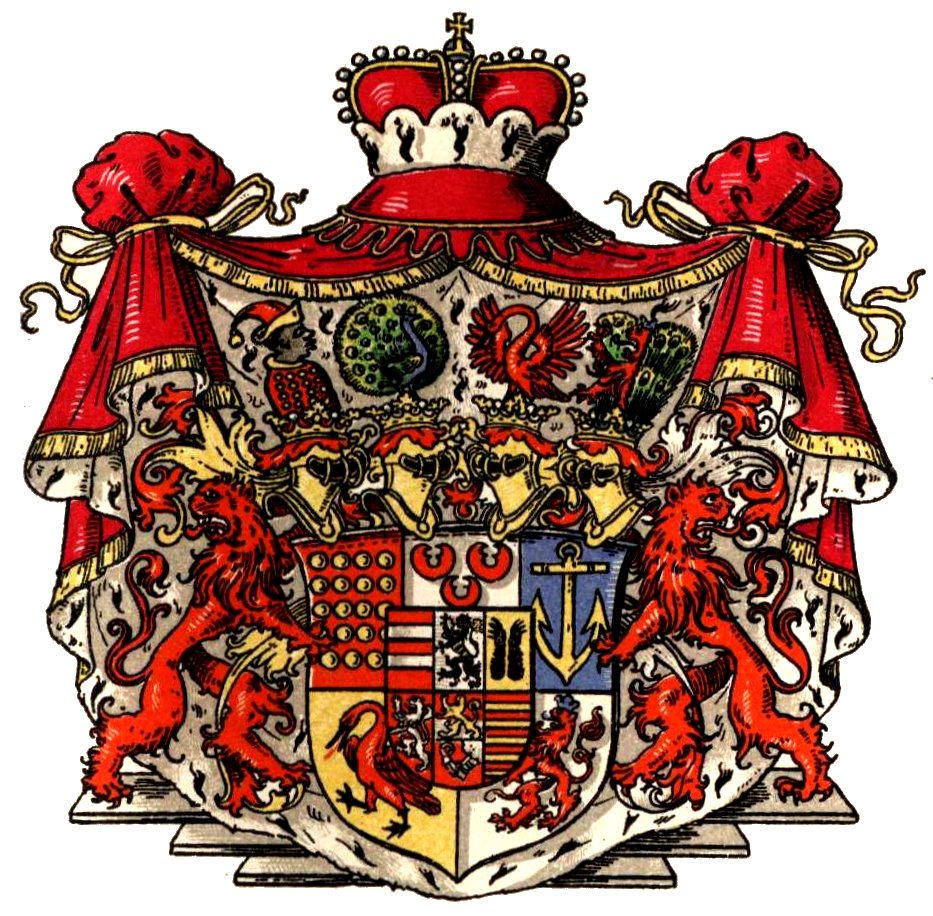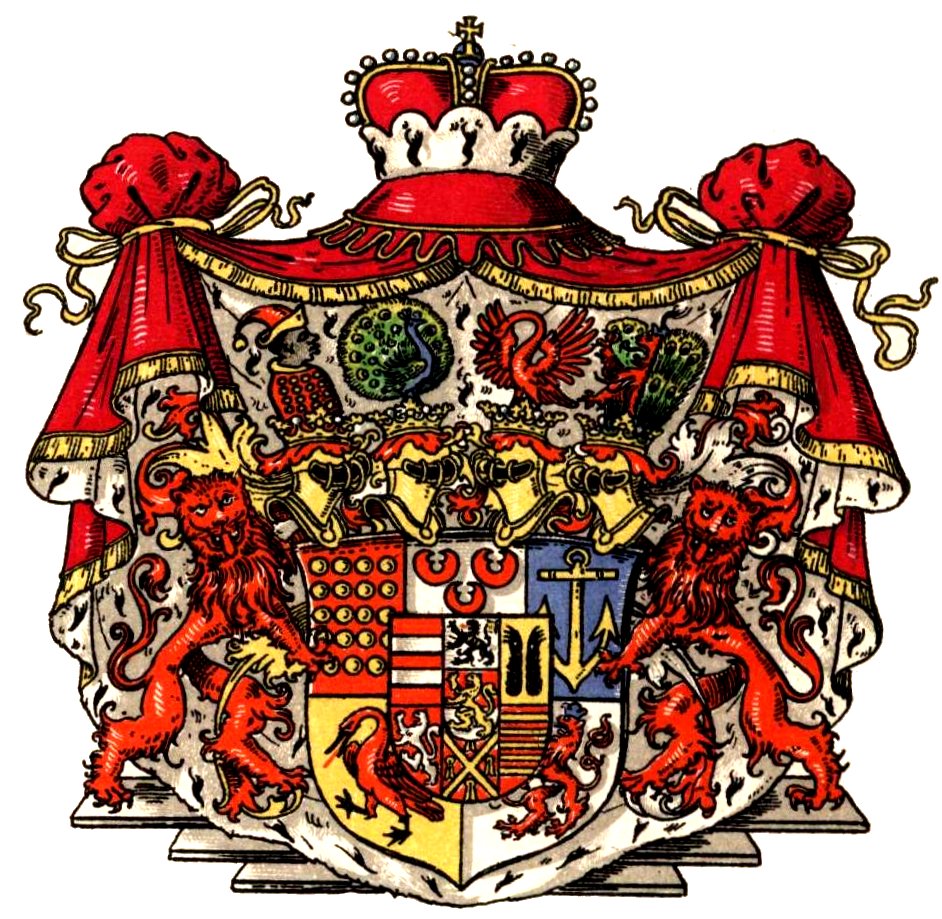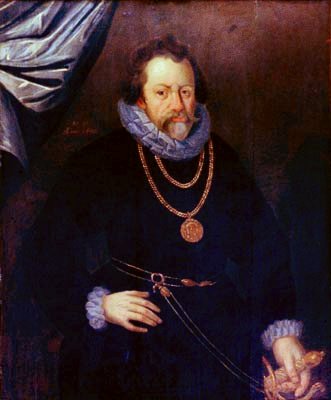|
Bentheim-Tecklenburg-Rheda
Bentheim-Tecklenburg-Rheda was a historical county of the Holy Roman Empire, located in present northwestern North Rhine-Westphalia and southwestern Lower Saxony, Germany. The princely branch of Bentheim-Tecklenburg-Rheda, with its family seats in Rheda-Wiedenbrück, Rheda and Hagen-Hohenlimburg, Hohenlimburg, is one of the two extant lines of the princely County of Bentheim, House of Bentheim, besides the Princes of Bentheim-Steinfurt who still own the castles of Bentheim Castle, Bentheim and Steinfurt. History Bentheim-Tecklenburg-Rheda emerged as a partition of Bentheim-Steinfurt-Tecklenburg-Limburg in 1606, when the older county of Bentheim-Tecklenburg was partitioned off again, after the death of Arnold III, Count of Bentheim-Steinfurt-Tecklenburg-Limburg (1554-1606). The territories of the ruling counts of Bentheim-Tecklenburg-Limburg and Rheda then consisted of the counties of Tecklenburg and Hagen-Hohenlimburg, Limburg and the lordship of Rheda-Wiedenbrück, Rheda, at t ... [...More Info...] [...Related Items...] OR: [Wikipedia] [Google] [Baidu] |
Bentheim-Steinfurt
Bentheim-Steinfurt was a historical county located in northwestern North Rhine-Westphalia in the region surrounding Steinfurt, Germany. Bentheim-Steinfurt was a partition of Bentheim-Bentheim, itself a partition of the County of Bentheim. Bentheim-Steinfurt was partitioned: between itself and Bentheim-Tecklenburg-Rheda in 1606; and between itself and Bentheim-Bentheim in 1643. History Bentheim-Steinfurt and its territories were converted to Lutheranism in 1544 by Count Arnold II. He was succeeded by his less-religious son, Eberwin III. After the latter's early death at age 26, he was succeeded by his infant child, Arnold III, under the regency of Anna of Tecklenburg. Arnold III married Magdalena of Neuenahr in 1576, and he began attempts to properly convert the county to Protestantism. In the autumn of 1587, Lutheran preachers from across Germany were invited to help reform the Counties of Bentheim, Steinfurt, Lingen and Tecklenburg. The new laws were largely modelled on those ... [...More Info...] [...Related Items...] OR: [Wikipedia] [Google] [Baidu] |
Bentheim-Tecklenburg
Bentheim-Tecklenburg was a German county based in the region around Tecklenburg in northern North Rhine-Westphalia, Germany. History Bentheim-Tecklenburg emerged as a partition of the County of Bentheim in 1277, and was partitioned between itself and Bentheim-Lingen in 1450. Count Conrad converted his county to Lutheranism in 1541. In 1557, it was inherited by Bentheim-Steinfurt. Arnold III, Count of Bentheim-Steinfurt-Tecklenburg-Limburg (1554-1606) held the counties of Bentheim, Tecklenburg, Steinfurt, Limburg (with Hohenlimburg Castle), the Lordship of Rheda, possessions on the Lower Rhine and bailiff rights in the Archbishopric of Cologne. After his death his possessions were divided between his three eldest sons while the younger sons received lands from their mother. Adolf (1577-1623) received Tecklenburg and Rheda, Wilhelm Heinrich (1584-1632) Steinfurt (with Burgsteinfurt Castle), but left no offspring, Konrad Gumprecht (1585-1618) received Limburg, but his only s ... [...More Info...] [...Related Items...] OR: [Wikipedia] [Google] [Baidu] |
County Of Bentheim
The County of Bentheim (''Grafschaft Bentheim'', Low German ''Benthem'') was a state of the Holy Roman Empire, located in the south-west corner of today's Lower Saxony, Germany. The county's borders corresponded largely to those of the modern administrative district (''Landkreis'') of Grafschaft Bentheim. Geographically, Bentheim is composed largely of fenland, and early settlement was concentrated along the banks of the rivers which pass through the county. Deposits of Bentheim sandstone formed the basis of a profitable export trade to other parts of present-day Germany and the Netherlands. History Around 500–600 CE Germanic tribes settled in the area. The Saxon tribes lost their independence in 804 CE after the Franks won the Saxon Wars. Between 800 and 850 Emperor Charlemagne had them forced to convert to Christianity. The scholten system was introduced, and Emlichheim, Uelsen, Veldhausen, and Nordhorn become church and court districts. The county of Bentheim was in exi ... [...More Info...] [...Related Items...] OR: [Wikipedia] [Google] [Baidu] |
German Mediatization
German mediatisation (; german: deutsche Mediatisierung) was the major territorial restructuring that took place between 1802 and 1814 in Germany and the surrounding region by means of the mass mediatisation and secularisation In sociology, secularization (or secularisation) is the transformation of a society from close identification with religious values and institutions toward non-religious values and secular institutions. The ''secularization thesis'' expresses the ... of a large number of Imperial Estates. Most Hochstift, ecclesiastical principalities, free imperial cities, secular principalities, and other minor self-ruling entities of the Holy Roman Empire lost their independent status and were absorbed into the remaining states. By the end of the mediatisation process, the number of German states had been reduced from almost 300 to just 39. In the strict sense of the word, mediatisation consists in the subsumption of an Imperial immediacy, immediate () state into anot ... [...More Info...] [...Related Items...] OR: [Wikipedia] [Google] [Baidu] |
Denzil Fortescue, 6th Earl Fortescue
Denzil George Fortescue, 6th Earl Fortescue MC TD (13 June 1893 – 1 June 1977) was a British peer and farmer who served in both the First World War and Second World War. Early life and education Fortescue was the third born and second surviving son of Hugh Fortescue, 4th Earl Fortescue and Hon. Emily Ormsby-Gore, daughter of William Ormsby-Gore, 2nd Baron Harlech. He grew up at the family estate at Castle Hill, North Devon. He was educated at Eton and New College, Oxford, where he studied under William Spooner. He received the Military Cross in 1919: Career He joined the Royal North Devon Yeomanry and in 1915 was sent to Gallipoli. After suffering a severe bout of dysentery, he returned home to recover. He rejoined the war in 1916 in France, where he fought at the Battle of the Somme. In four weeks, he fought in six battles. Fortescue was commanding officer of the Royal Devon Yeomanry 1935–1941, and commanding officer of the 1st Heavy Regiment, Royal Artillery, 1942 ... [...More Info...] [...Related Items...] OR: [Wikipedia] [Google] [Baidu] |
Bentheim Tecklenburg Rheda 2 - Tyroff HA
Bentheim may refer to: Places *County of Bentheim, a state of the Holy Roman Empire from ''ca.'' 1228 to 1806, located in present-day Lower Saxony, Germany, roughly contiguous with the modern County of Bentheim district * County of Bentheim (district), a district (''Landkreis'') in Lower Saxony, Germany *Bentheim Castle (''Burg Bentheim''), an early medieval castle in Bad Bentheim, Lower Saxony, Germany * Bad Bentheim, a town in Lower Saxony, Germany in the district of Grafschaft Bentheim known as Bentheim until 1979 *Bentheim, a community within Overisel Township, Michigan, United States Any of several historical political entities related to the County of Bentheim: *Bentheim-Alpen (1606–1629) *Bentheim-Bentheim, a county eventually comprising the County of Bentheim (1277–1530, 1643–1806) *Bentheim-Steinfurt, a county located in the region surrounding Steinfurt (1454–1806) *Bentheim-Limburg (1606–1632) *Bentheim-Lingen (1450–1555) *Bentheim-Tecklenburg (1277–1557) * ... [...More Info...] [...Related Items...] OR: [Wikipedia] [Google] [Baidu] |
Populated Places Established In 1606
Population typically refers to the number of people in a single area, whether it be a city or town, region, country, continent, or the world. Governments typically quantify the size of the resident population within their jurisdiction using a census, a process of collecting, analysing, compiling, and publishing data regarding a population. Perspectives of various disciplines Social sciences In sociology and population geography, population refers to a group of human beings with some predefined criterion in common, such as location, race, ethnicity, nationality, or religion. Demography is a social science which entails the statistical study of populations. Ecology In ecology, a population is a group of organisms of the same species who inhabit the same particular geographical area and are capable of interbreeding. The area of a sexual population is the area where inter-breeding is possible between any pair within the area and more probable than cross-breeding with in ... [...More Info...] [...Related Items...] OR: [Wikipedia] [Google] [Baidu] |
Hoyos Family
The House of Hoyos is a Spanish and Austrian noble family. It derives its name from El Hoyo de Pinares in Ávila, Castile and León, and can be traced to the 9th century. Juan de Hoyos and his family accompanied the later Ferdinand I, Holy Roman Emperor, to Lower Austria in 1525, founding the Austrian branch of the family. This branch rose to prominence in Austria and in Hungary as Hungarian magnates over the centuries. The older line of the family was elevated to imperial counts in 1628, and became extinct in 1718. A younger line was elevated to imperial counts in 1674. Notable members * Ernst Karl von Hoyos-Sprinzenstein (1830–1903), Austrian landowner and politician *Alexander, Count of Hoyos Ludwig Alexander Georg Graf von Hoyos, Freiherr zu Stichsenstein (13 May 1876 – 20 October 1937) was an Austro-Hungarian diplomat who played a major role during the July Crisis while serving as chef de cabinet of the Foreign Minister at the ou ... (1876-1937), Austro-Hungarian ... [...More Info...] [...Related Items...] OR: [Wikipedia] [Google] [Baidu] |
Hardenberg (surname)
Hardenberg and von Hardenberg are German surnames, originally given to people from various places called Hardenberg. Noble family Some of these belong to the German noble family of the Princes, Counts and Barons von Hardenberg or their Danish branch (see the German Wikipedia article Hardenberg family) with their ancestral seat at Nörten-Hardenberg since 1287 to this day. Notable people with these surnames include: * Albert Hardenberg (c. 1510–1574), Reformed theologian, born near Hardenberg, Overijssel * Anne Hardenberg (died 1588), Danish noblewoman * Astrid Gräfin von Hardenberg (1925–2015), daughter of Carl-Hans Graf von Hardenberg * Carl-Hans Graf von Hardenberg (1891–1958), German politician * Georg Philipp Friedrich Freiherr von Hardenberg (1772–1801), German poet known as Novalis * Henriette Hardenberg (1894–1993), German Expressionist poet * Prince Karl August von Hardenberg (1750–1822), Prussian statesman * Mette Hardenberg (1569–1629), Danish n ... [...More Info...] [...Related Items...] OR: [Wikipedia] [Google] [Baidu] |
Schönburg-Waldenburg
Waldenburg is a town in the district Zwickau in Saxony, Germany. The castle was owned by the House of Schönburg from 1378 until 1945. The pottery town of Waldenburg lies in the valley of the Zwickauer Mulde. The environment is characterized by forest areas, river meadows and the hilly landscape of the Erzgebirge foothills. Waldenburg was founded around 1254 and first documented in 1336 as the town of "Waldinberg". The German settlement of the area that later became Waldenburg began with the founding of the monastery in Remse in 1143. The construction of Waldenburg Castle took place between 1165 and 1172. It was built as a security post on the salt trade route at the Mulden crossing. The streets, buildings and remains of the town wall in the upper town still show Walsenburg's roots in the Middle Ages. A look into the multi-story cellar systems of the upper town reveal even more evidence of this. Walsenburg's pottery tradition has been strong for 700 years. Friedrich XI of Schön ... [...More Info...] [...Related Items...] OR: [Wikipedia] [Google] [Baidu] |
Jacob Van Ruisdael
Jacob Isaackszoon van Ruisdael (; 1629 – 10 March 1682) was a Dutch painter, draughtsman, and etcher. He is generally considered the pre-eminent landscape painter of the Dutch Golden Age, a period of great wealth and cultural achievement when Dutch painting became highly popular. Prolific and versatile, Ruisdael depicted a wide variety of landscape subjects. From 1646 he painted Dutch countryside scenes of remarkable quality for a young man. After a trip to Germany in 1650, his landscapes took on a more heroic character. In his late work, conducted when he lived and worked in Amsterdam, he added city panoramas and seascapes to his regular repertoire. In these, the sky often took up two-thirds of the canvas. In total he produced more than 150 Scandinavian views featuring waterfalls. Ruisdael's only registered pupil was Meindert Hobbema, one of several artists who painted figures in his landscapes. Hobbema's work has at times been confused with Ruisdael's. Ruisdael ... [...More Info...] [...Related Items...] OR: [Wikipedia] [Google] [Baidu] |






